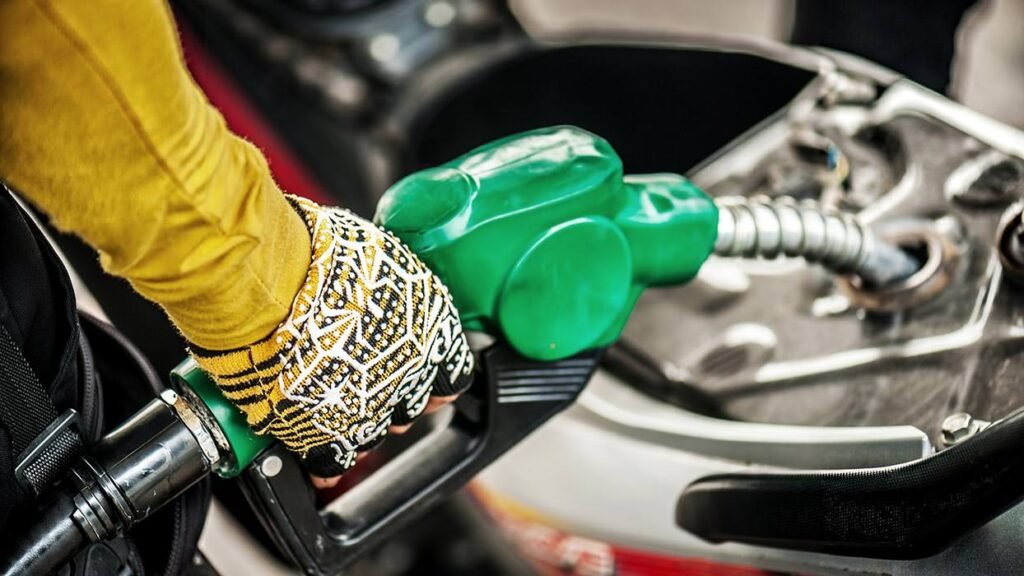Mixing fuel and oil together may seem a little strange for those who grew up in the age of 4-stroke engines. But for those running 2-stroke engines, this is a necessary step in keeping your engine healthy and running smoothly.
This blog post will explore how to mix 2-stroke fuel, what ratio to use, and some tips and tricks to make the process easier.
What Is 2 Stroke fuel?

The basic principle behind 2-stroke fuel is straightforward. It’s a mixture of oil and gas used to lubricate and clean the engine as it burns. The oil portion of the mixture coats the engine walls and pistons, while the gas evaporates and leaves behind a trail of clean-burning residue.
Two-stroke engines generate carbon buildup more quickly than four-stroke engines, so fuel is essential to keep the engine clean.
What Ratio Should I Need To Mix fuel?
If you’re mixing two-stroke fuel, it’s essential to mix fresh unleaded fuel with oil at the correct ratio. Too much oil in the mixture will cause the engine to smoke; too little oil and the engine will overheat. 2-stroke fuel is typically mixed at a ratio of 50:1, meaning there is 50 parts gas to 1 part oil. This means you would need 2.6 gallons of gas for every ounce of oil.
This fuel mix ratio can vary depending on the manufacturer of your engine.
Check your owner’s manual to be sure. You can also find oil ratio conversion charts online to help you mix the correct ratio for your engine.
Why Mix Two Stroke Fuel?
There are a few reasons you might want to mix your own 2 stroke fuel.
- Firstly, it can be much cheaper than buying pre-mixed fuel.
- Secondly, you can tailor the mix to your particular engine and driving conditions.
- And thirdly, you can be sure of the fuel you’re using.
If you’re doing any serious 2 stroke engine work, it’s well worth learning how to mix your own fuel. Not only will it save you money, but it will also give you complete control over the fuel quality you’re using.
How To Mix 2-Stroke Fuel
To mix your own 2-stroke fuel, you will need the following:
- 1 gallon of gas
- 2.6 ounces of oil
- A gas can
- A funnel
- A measuring cup
Instructions
- Pour the petrol into the fuel can.
- Add the oil to the fuel can.
- Screw on the lid of the petrol can and shake it up to mix the fuel.
- Use the funnel to pour the fuel into your motorcycle or 2-stroke engine-powered equipment.
- Check your equipment’s owner’s manual for the two-stroke oil and petrol ratio.
Common Mistakes People Make When Mixing 2 Stroke Oil With The Petrol ?
One of the most common mistakes people make when mixing 2-stroke fuel is not adding enough 2 stroke oil.
Two-stroke engine lubrication oil is essential for the proper function of your engine. Without it, your engine will overheat and eventually seize up.
Another common mistake is adding too much 2 stroke oil in the petrol. This can lead to fouling of the spark plugs and poor engine performance.
Dirty fuel storage containers can also cause oil deposits. Be sure to use a clean, dry container when you mix fuel.
It is essential to follow the manufacturer’s recommendations when adding fuel.
Conclusion

You can get the most out of your bike or other equipment if you follow these simple steps after learning these crucial details about how to mix 2 stroke fuel.
Knowing how to mix two-stroke fuel now allows you to shop our store for high-quality two-stroke oil.
Did you know that while the term “2 cycle” is used in other parts of the world, we use the term “2 stroke” in Australia. A 2 cycle oil ratio chart and a gas oil ratio chart are both the same as a 2 stroke oil mix chart because gasoline is also known as “gas” or “gasoline.”
If you’re looking for a way to save gas money, mixing your 2-stroke fuel is a great option.
You can mix a batch of high-quality fuel with just a few simple ingredients to keep your engine running smoothly. And best of all, it’s easy to do! Follow our step-by-step guide, and you’ll mix like a pro.

